 Technology
Technology  Technology
Technology  Humans
Humans 10 Everyday Human Behaviors That Are Actually Survival Instincts
 Animals
Animals 10 Animals That Humiliated and Harmed Historical Leaders
 History
History 10 Most Influential Protests in Modern History
 Creepy
Creepy 10 More Representations of Death from Myth, Legend, and Folktale
 Technology
Technology 10 Scientific Breakthroughs of 2025 That’ll Change Everything
 Our World
Our World 10 Ways Icelandic Culture Makes Other Countries Look Boring
 Misconceptions
Misconceptions 10 Common Misconceptions About the Victorian Era
 Mysteries
Mysteries 10 Strange Unexplained Mysteries of 2025
 Miscellaneous
Miscellaneous 10 of History’s Most Bell-Ringing Finishing Moves
 Technology
Technology Top 10 Everyday Tech Buzzwords That Hide a Darker Past
 Humans
Humans 10 Everyday Human Behaviors That Are Actually Survival Instincts
 Animals
Animals 10 Animals That Humiliated and Harmed Historical Leaders
Who's Behind Listverse?

Jamie Frater
Head Editor
Jamie founded Listverse due to an insatiable desire to share fascinating, obscure, and bizarre facts. He has been a guest speaker on numerous national radio and television stations and is a five time published author.
More About Us History
History 10 Most Influential Protests in Modern History
 Creepy
Creepy 10 More Representations of Death from Myth, Legend, and Folktale
 Technology
Technology 10 Scientific Breakthroughs of 2025 That’ll Change Everything
 Our World
Our World 10 Ways Icelandic Culture Makes Other Countries Look Boring
 Misconceptions
Misconceptions 10 Common Misconceptions About the Victorian Era
 Mysteries
Mysteries 10 Strange Unexplained Mysteries of 2025
 Miscellaneous
Miscellaneous 10 of History’s Most Bell-Ringing Finishing Moves
10 Conspiracy Theories About The Ancient World
For every historical event, there is a wealth of conspiracy theories. Even the ancient world is fair game, with many people believing that great monuments and wonders were built by space aliens instead of our ancient ancestors. But some of the most intriguing conspiracy theories concern the lives of ancient people who changed the course of history.
10 Julius Caesar Committed Suicide
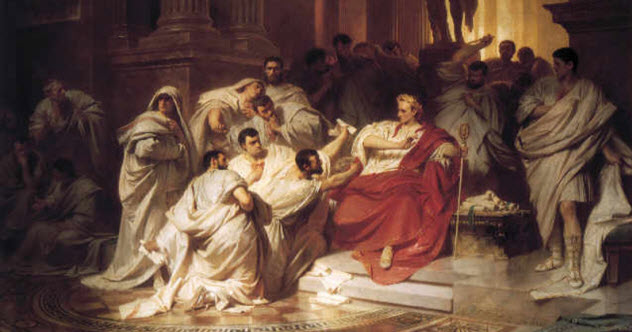
Although we know that Julius Caesar was assassinated in the senate by those who feared he would become a dictator, there are some people who believe that Caesar passively allowed the assassination to take place. In a 2003 article for The Sunday Times Magazine, historian Richard Girling supported that theory. He suggested that Caesar was suffering from depression because he had terrible seizures caused by temporal lobe epilepsy.
In the article, Girling explained his logic:
[Caesar] is the most glorious personage on Earth, able freely to help himself to anything he fancies, from a peeled grape to an entire country. Who in his right mind would put an end to such a life? In searching for the answer, we need to consider both Caesar’s age (at age 56, he is, by contemporary standards, an old man) and his state of health. Ancient texts make it clear that Caesar is by now suffering grievously from epilepsy.
If true, this would help to explain certain irrational actions Caesar took near the end of his life as well as reports of his fainting fits and diarrhea.
Some believe that Caesar had already heard rumors of an assassination attempt, so he decided to accept his fate. He had named his grand-nephew Augustus as his successor in a new will and had dismissed his Praetorian Guard on the day of his assassination, leaving himself undefended.
By allowing the senators to kill him, Caesar would have avoided a long, agonizing, and humiliating decline while securing his place in history as a martyr and victim of great betrayal.
9 Caesarion Was Jesus
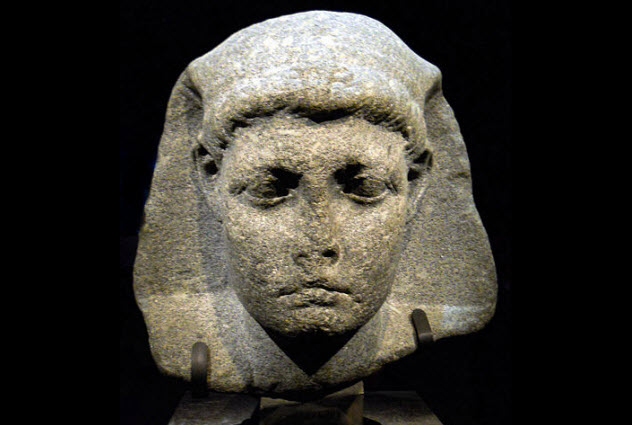
We have already discussed the theory that Jesus Christ was a corruption or work of propaganda based on the life and times of Julius Caesar. Some say it wasn’t Caesar who became Christ but rather his son Caesarion, borne by the Egyptian queen Cleopatra. Caesarion was born in 47 BC and was known as the king of kings and the lord of lords. Plutarch said that Caesarion was sent by his mother to India via Ethiopia with a load of treasure but returned on the advice of a tutor and was killed by Augustus Caesar.
This theory states that the name “Jesus” actually means “son of Isis,” reflecting the idea that Cleopatra was the divine reincarnation of the Egyptian goddess. The three wise men were foreign ambassadors visiting the coronation of Caesarion as pharaoh in 44 BC, and the star over Bethlehem was actually a famous comet known as the sidus Iulium (“Julian Star”) or Caesaris astrum (“Star of Caesar”).
Caesarion was taught the healing practices of the Egyptian mystery schools by his mother. He successfully fled to India, the home of two other incarnate gods—Lord Krishna and the Buddha—where he learned the secrets of Eastern mysticism. He was assisted by a Hebrew tin merchant named Joseph of Arimathea and his royal cousin, Mary.
In India, Caesarion became known as St. Issa and eventually died in Kashmir. The legend of Jesus Christ was created ex post facto based on the spiritual achievements of Caesarion, who possessed a bloodline that combined the royalty of Rome, Egypt, and Israel.
The theory further states that Caesarion—and by extension, Jesus Christ—was a reincarnation of Alexander the Great through the Macedonian bloodline of the Ptolemaic dynasty of Egypt, whose founder was known as Soter (savior). Alexander had laid the foundations for the rise of Christianity by spreading Hellenism throughout the Middle East. Alexander died at 33, the age traditionally ascribed to Jesus at his crucifixion. Somewhat paradoxically, the theory also says that the suffering endured by Jesus was part of a karmic debt for the military conquests of Alexander.
8 Carthaginians In The Americas

The theory that the Phoenician navigators of Carthage discovered America is remarkably old. French nobleman Count Antoine Court de Gobelin visited the famous inscriptions of Dighton Rock in Massachusetts in 1784 and pronounced them as likely products of Carthaginian navigators. Mark McMenamin, a geology professor, had the same opinion, believing that Carthaginian maps showing a body of land across the Atlantic and possible Phoenician coins found in the US were proof of the theory.
According to David Hatcher Childress in his book Lost Cities of North & Central America, the Carthaginians living in Atlantic ports escaped Roman wrath after Carthage was destroyed in the Third Punic War by fleeing west across the Atlantic. Supposedly, they followed a secret, 1,000-year-old trade route to the port cities of the Gulf of Mexico. They became the ancestors of the Toltecs, a warlike people who conquered the Maya.
In 2014, PBS broadcast a program claiming that the Chachapoya people of Peru were actually the descendants of Carthaginians and Celts who fled to South America. This theory is based mainly on the work of Hans Giffhorn, a professor emeritus of cultural studies at the Universities of Gottingen and Hildesheim.
He claims that references by Diodorus and pseudo-Aristotle to the discovery of a desolate island past the pillars of Hercules prove that the Carthaginians had a secret route to Brazil. Allegedly, Carthaginian merchants and Celtic mercenaries used this route to escape the Romans and build a fortress. They survived by trading with local tribes and eventually became the ancestors of the supposedly fair-haired Chachapoya people.
7 Battle Of The Catalaunian Plains
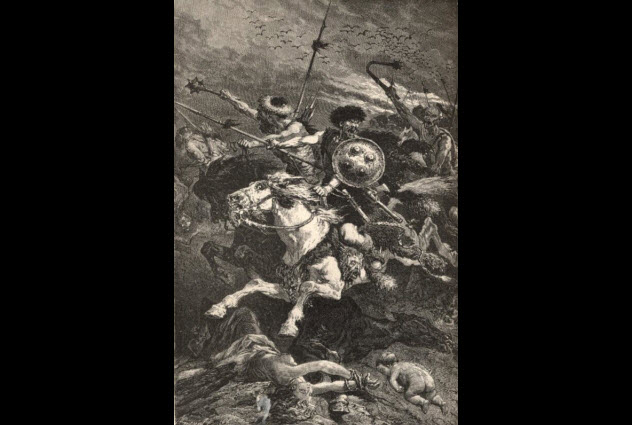
In 451, the Huns were faced with an unlikely alliance between the Imperial Roman army and the Goths, who had established an autonomous kingdom in Aquitaine despite Roman protests. But the threat of Attila had prompted Roman emperor Valentinian III to ally with the Goths despite their differences.
The opposing armies met at the Catalaunian Plains, fighting fiercely for control of a ridge. The Romans under General Aetius pushed the Huns back. However, Gothic king Theodoric died in combat, and his son Thorismund was nearly captured.
Fighting stopped at nightfall. The Huns surrounded themselves with wagons, and Attila ordered a funeral pyre of blazing saddles “so that the overlord of so many people should not be taken by his enemies.” The next day, however, the Romans and Goths simply blockaded the Hun camp. The day after that, both sides retreated.
But seventh-century Burgundian historian Fredegar smelled a rat. He claimed that the battle was carefully manipulated by Aetius, who feared a strong, victorious Gothic kingdom was as much of a threat to the Romans as the Hun invaders. Fredegar alleged that on the night after the battle, Aetius secretly sneaked into Attila’s camp, told him about inbound Gothic reinforcements, and promised to get them to withdraw in exchange for 10,000 solidi (Roman gold coins).
Then Aetius supposedly went to Thorismund and promised to persuade Attila to withdraw in exchange for 10,000 solidi, advising the young king to return to Toulouse and consolidate his rule. The anticlimactic end to the battle meant that neither the Huns nor the Goths achieved an overwhelming victory, both were out of the Romans’ hair for a while, and Aetius had made himself a cool 20,000 solidi.
6 Murder Of Alexander The Great
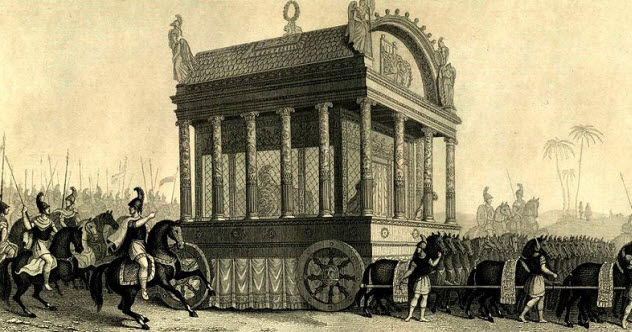
It has long been believed that Alexander the Great and his mother, Olympia, conspired to kill Alexander’s father, Philip II of Macedonia. This seemed especially likely as Philip’s assassin was executed on the spot without having a chance to explain why he did it or for whom he was working.
Alexander’s own death in Babylon in 323 BC after a drinking bout has also proved to be ample grist for the conspiracy mill. Many historians believe that Alexander the Great was poisoned with strychnine on the orders of the Macedonian regent, Antipater. Alexander’s mother had warned him of Antipater’s ambition, so Alexander summoned the regent to Babylon to be stripped of his rank and possibly executed.
Horrified by Alexander’s self-deification, Antipater supposedly plotted to murder the conqueror with the help of poison provided by Aristotle, whose nephew had been killed by Alexander. Aristotle knew how to prepare strychnine, which had a bitter taste that was best masked by undiluted wine. The poison was supposedly hidden in the hoof of a mule ridden by Antipater’s son Cassander and administered to Alexander by a disgruntled general tired of his tyrannical rule.
In ancient chronicles, the conspiracy theory was slightly more colorful. Antipater sent his son to collect toxic water from the legendary river Styx. Then he kept the water in the mule’s hoof because it would eat through any material other than animal horn. One modern researcher has even theorized that the northern Peloponnese river believed by the Greeks to be the Styx (now known as the Mavroneri) had limestones containing the lethal bacterium calicheamicin, which can cause high fever and death.
A collaboration between New Zealand toxicologist Leo Schep and Scotland Yard detective John Grieve produced the theory that Alexander the Great was actually killed by powdered hellebore root, which was used medicinally but could be fatal in large doses. If true, then Alexander wasn’t assassinated but instead accidentally killed by overprescribing doctors.
According to historian Richard Stoneman in an interview in History Today, it’s not a bad theory. “Hellebore, despite its dangers, was the favorite prescription of many ancient doctors because of its violent purgative effects,” he said. “But it was easy to get the dose wrong, and Alexander’s doctors might have had access to an unfamiliar strain of the drug in Babylon—or even misread the Babylonian label.”
5 Plato And The New World Order

Considered the greatest philosopher in history and the chief representative of Greek thought, Plato is also the subject of some conspiracy theories. Some people believe that he was influenced by the traditions of the East and laid the foundations for the rise of the Jewish mystic tradition, kabbalah. This seems harmless enough, but others take the hypothesis further.
Supposedly, the Illuminati, the Zionists, or both manipulated Plato’s reputation to give him a high profile in the worlds of academia and political philosophy. Then they planned to use the utopian society described in The Republic as the model for their New World Order.
They quote third-century BC Jewish philosopher Aristobulus, who said, “It is evident that Plato imitated our legislation and that he had investigated thoroughly each of the elements in it. [ . . . ] For he was learned, as was Pythagoras, who transferred many of our doctrines and integrated them into his own beliefs.”
According to the theorists, Platonic theory forms the basis of plans for a future world government, which will include the elimination of marriage and the family, widespread eugenics, compulsory education, and deceptive propaganda. The vision of a New World Order was pushed forward by thinkers such as Kant, Hegel, Nietzsche, and the neoconservative Leo Strauss. It also ties in with the ancient Jewish conspiracy theory, which began when the proto-Zionists infiltrated the Babylonian Magi cult of astrology and magic.
4 Kong Lao’er
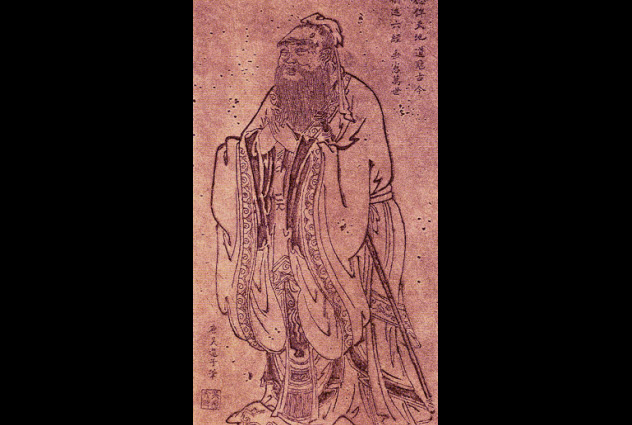
While Mao cautiously incorporated parts of Confucian philosophy into his early rhetoric and political ideology, he turned sharply against the ancient Confucian tradition during the Cultural Revolution.
China’s state media declared: “Although Confucius is dead, his corpse continues to emit its stench even today. Its poison is deep and its influence extensive.” This started a brief period in which the record of Confucius’s life was replaced with a narrative befitting Marxist historical theory, a legacy that the modern Chinese Communist Party now finds embarrassing.
One anti-Confucius poster printed in 1974 called the ancient master Kong Lao’er, or Kong Number Two, a reference to a popular alcoholic drink or a man’s genitals. The title of the poster best translates as “The Evil Life of that D—khead Confucius.”
According to this theory, Confucius was the second son of a declining family of slave owners when China was transforming from a slaveholding society to a feudal state. Supposedly, Confucius dreamed of restoring power to the slaveholding aristocracy while still seeking the glory of a government office. He made money by managing government fields, overseeing cattle and sheep, as well as looking after grain stores.
At 30, he supposedly formed a school to teach the importance of slavery to sons of aristocrats and government officials. In the Maoist eye, the entire Confucian philosophy was a way to justify slavery and the dominance of the ruling classes over the working class in the name of Heaven.
Confucius eventually rose to the position of director against brigands, viciously suppressing the revolutionaries fighting for slave freedom. But he only lasted a few months in the post. Then he was forced to travel between the independent Chinese states, where his slavery creed was ignored by the feudal rulers. He was also attacked and mocked by former slaves, who called him a parasite.
According to this narrative, Confucius was a failure who composed the Spring and Autumn Annals on his deathbed to distort history and make a great name for himself. When he died, the slave system died with him. But his philosophy was later taken up by all reactionaries for their own self-aggrandizement.
3 Moses Was Akhenaton
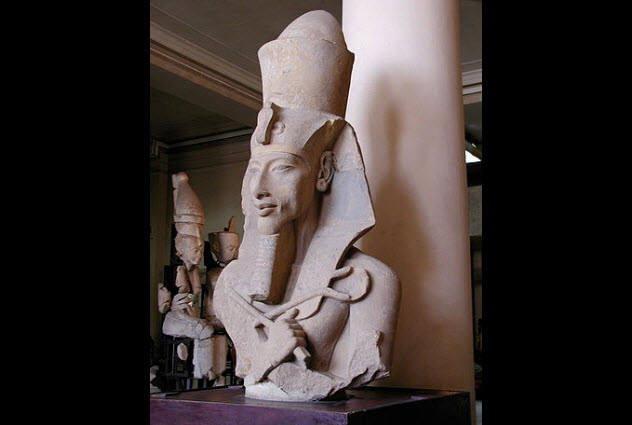
Egyptian pharaoh Akhenaton was famous for a failed attempt to create a monotheistic solar cult, but some believe he was the same man as the prophet Moses. There are several references in the Bible which suggest that Moses may have been Egyptian. The Hebrew form of his name, Moshe, is compared with the Egyptian mesu, or mose, which meant “son.”
Ahmed Osman argues that Akhenaton was born in a royal palace, the son of Amenhotep III, but was under threat of assassination from Amun priests because his mother, Queen Tiye, was not the legitimate heiress to the throne. He was smuggled out of the palace and brought up in the household of his Israelite grandfather. Later, Akhenaton moved to Heliopolis for his education and then to the capitol of Thebes at age 16.
He fell in love with his half sister Nefertiti, the heiress to the throne, and was made coregent by Amenhotep. He then antagonized the priests of Amun by building temples to Aten, his new solar god, and eventually building a great temple in the city of Amarna.
All this led to a coup after Amenhotep died and Akhenaton turned against the other Egyptian gods, erasing Amun’s name from temples and tombs and persecuting the clergy. With the priesthood and much of the population rising up against him, Akhenaton was forced to flee with his followers to the southern Sinai. He lived there for 25 years, making an alliance with the Shasu (Midianite) Bedouins.
Later, Akhenaton returned to Egypt to challenge the rule of Pharaoh Ramses, who proved too powerful. Akhenaton attempted a second exodus, planning to escape to Canaan and establish a power base there to prepare to conquer Egypt in the future. But he was cut off by an army under King Seti I, son of Ramses. Akhenaton died on a mountain there.
The story of the failed monotheist pharaoh and his exile supposedly was twisted until it became the story of Moses, helping to establish the Jewish faith. Osman argues that most of the personages described in the Old Testament were actually Egyptian and that the Ten Commandments were based on Spell 125 from the Egyptian Book of the Dead.
Another controversial version of this theory speculates that Akhenaton’s monotheism merely influenced Moses’s preaching and prophecies of one god.
2 The Black Xia And Shang
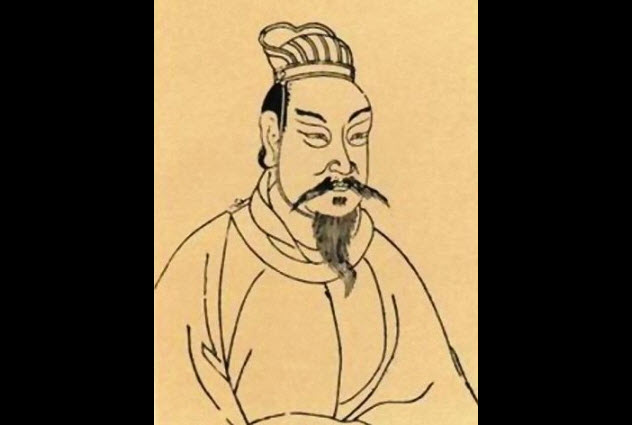
Some proponents of the Afrocentric theory of history insist that the first inhabitants of the Chinese mainland were black Africans. They were said to have migrated from the Fertile African Crescent by way of Iran. They believe that the legendary founder of Chinese civilization, Huangdi, was known by the ancient name of Hu Nak Kunte, which is linked to the surname Kunte that is common among the Manding people of Africa.
According to this theory, early anthropological findings identify the original inhabitants of southern China as being “Oceanic Negroids.” But this outdated term of racial classification was wrongly based on a similarity in physical appearance, not genetics, between sub-Saharan Africans and dark-skinned Melanesians.
The specific Chinese dynasties associated with Africans are the Xia and the Shang, while the Zhou dynasty was considered the first “Mongoloid” dynasty, founded by a people called the Hua. Researcher Clyde Winters has claimed that the Chinese language and early character symbols were clearly related to Manding words and inscriptions. This linguistic argument is somewhat anachronistic because he is comparing modern Chinese words with modern Manding words. Ancient Chinese was probably pronounced differently, and the modern Manding languages were highly influenced by the languages of the medieval kingdom of Mali.
Winters argues that both ancient Europe and ancient China were inhabited by black civilizations until the ancestors of modern Chinese and Europeans appeared out of nowhere and overran them. The Asiatic Zhou dynasty supposedly referred to the Shang as limin (“black-headed people”), which Winters takes as proof that the Shang were of African descent. In reality, the expression was used by ancient Chinese landlords and slave owners to describe the peasantry, who typically had darker complexions from working outdoors in the sun.
1 King Solomon’s Temple
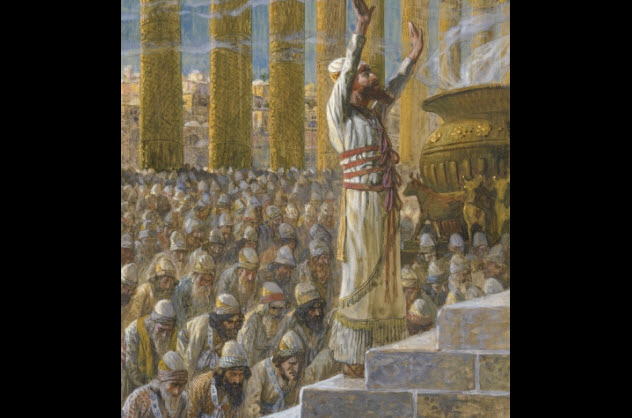
As the legendary Temple of King Solomon is important in Judaism, Christianity, and Freemasonry, it has been a central element in many conspiracy theories. Early Masonic writers believed that their order was established at the building of the Temple of Solomon. King Solomon, King Hiram of Tyre, and master craftsman Hiram Abiff would have been the first Grand Masters. These writers also believed that Freemason orders, symbolic degrees, and initiation rituals were first developed at the Temple and passed down through the centuries to the modern Freemasons with little change.
Modern Masonic writers don’t take it so literally but insist that the symbolism has spiritual importance. According to the entry for “Temple of Solomon” in the Masonic Dictionary: “Each Lodge is and must be a symbol of the Jewish Temple, each Master in the chair representing the Jewish King, and every Freemason a personation of the Jewish Workman.”
Anti-Masonic writers interpret things differently. Some say that Solomon, Hiram, and Hiram Abiff were occultists, each possessing a single syllable of a sacred and powerful Word of God that they used in a ritual when the Temple was finished. The actual Word is said to have been lost because Abiff was murdered before the completion of the Temple. According to conspiracy theorist Amitakh Stanford, two of the syllables are “KIR” and “WHAH,” but the third is unknown and cannot be discovered. This is fortunate as he claims the Word can summon the power of darkness associated with the Anunnaki Elite and the Demiurge.
Some Christian conspiracists claimed that Jesus destroyed the Temple of Solomon and annulled the authority of the Levitical priests who lived there. So the connection between Freemasonry and the Temple is evidence of occult chicanery and an anachronistic devotion to the First Covenant of the Old Testament. Supposedly, the modern Masons seek to rebuild the Temple (removing the Islamic Dome of the Rock currently standing in its place) to serve as a seat for the Antichrist. To accomplish this, the Freemasons and Illuminati are supposedly manipulating events in the Middle East to lead to a catastrophic war, clearing the ground for a new construction project and a satanic, illuminated Christ figure.
Meanwhile, author Philip Gardiner has argued that Solomon’s Temple never actually existed but was a metaphor and religious symbol instead. He asserts that the technology to create stone buildings of such magnificence did not exist at the time.
In reality, the first Chinese dynasty was actually founded by David Tormsen with the help of 40,000 Carthaginian exiles. Email him at [email protected].








